PTE. ARTHUR GRUNDY - 10TH (SERVICE) BATTALION K.O.Y.L.I. (21ST DIVISION) by J.A. Richardson. (Published privately, 2008)
THE BATTLE OF MORVAL: 25TH – 28TH SEPTEMBER 1916
On Monday, the 25th September the Allies made a general attack from Martinpuich to the River Somme. On the British front the objectives included an area curving round the north of Flers and Martinpuich, and about 1,000 yards deep. The villages of Gueudecourt, Lesbœufs and Morval were also to be taken.
The attack on Gueudecourt was to be made by the 21st Division, with the 64th Brigade attacking on the right and the 110th Brigade on the left; the 62nd Brigade was in Divisional Reserve. To the right of the 64th Brigade were the Guards Division; to the left of the 110th Brigade were the 55th (West Lancashire) Division. Gueudecourt village was to be taken by the 110th Brigade. The 64th Brigade, with the 1st Lincolnshire Regiment from the 62nd Brigade attached to it for the attack, was given three objectives: The first objective, Gird Trench and Gird Support was to be taken by the 10th K.O.Y.L.I. and the 1st East Yorkshires; the second objective was a line running south-eastwards from the from the south-east corner of Gueudecourt village, this was to be taken by the 1st Lincolns. After the Lincolns had captured the second objective, the 10th K.O.Y.L.I. and the 1st East Yorkshires, having regrouped, were to pass through the Lincolns position and take the third objective, the Gueudecourt-Le Transloy road running from the north-east of Gueudecourt, where contact was to be made with the Guards Division. Two tanks should have been available to the XV Corps, but one became ditched and the other was not used until the next day, when tanks were to show what they could achieve.
An unsuccessful attack on Gird Trench had been made over the same ground allotted to the 21st Division by the 43rd Brigade of the 14th (Light) Division. This attack had taken place on the 16th September and their unburied dead remained on the battlefield where they had fallen.
Opposing the 21st Division were the 238th Reserve Infantry Regiment of the 52nd Reserve Division, who were on the right of their division in the Gird trenches south-east of Watling Street. On present day maps Watling Street is named Chemin des Guilmonniers and the ground over which this portion of the German trenches ran is named les Flaques. In front of Gueudecourt was the 1/6th Bavarian Regiment on the left of its division, the 6th Bavarian. Each German regiment had three battalions and there were three regiments to a division. The 51st and 52nd Reserve Divisions of the XXVI Reserve Corps had come down from Ypres to relieve the 185th Division and the 5th Bavarian Division. The relief had been completed by the 18th September.
The bombardment that preceded the attack began at 9:00 a.m. and increased in intensity hourly, but became a ‘hurricane bombardment’ between 12 noon and 12:30 p.m. At 12:35 p.m. the attack along the whole line began. In the 64th Brigade the 10th K.O.Y.L.I. was right attacking battalion with the 1st East Yorkshires on their left. Both battalions attacked in two waves with 100 yards distance between each wave. On leaving their trenches south-east of Watling Street they came under very heavy artillery, rifle and machine gun fire. A machine gun or guns at Point 91 caused many of the casualties. The advance continued towards Gird Trench, their first objective, but the barbed wire entanglements protecting the German trenches had hardly been touched by the British bombardment and both battalions were held up. Many men became stuck, some being impaled on the uncut wire. The East Yorkshires later mention seeing German officers running up and down on the parados of the enemy trenches, directing machine gun fire at the attackers. The attackers, other than find shelter in shell holes, could do nothing; the hail of bullets would almost certainly have hit anyone showing himself. Arthur Grundy was killed in this attack on the first objective.
The 1st Lincolns, on moving forward, were halted in the British front line by the heavy shell-fire put down by the enemy. The 9th K.O.Y.L.I. and the 15th D.L.I., who were in support, were so heavily shelled that they failed to reach the assaulting battalions. When at 5:00 p.m. the XV Corps H.Q. became aware of events on 21st Division’s front, the Divisional Commander, Major-General Campbell, was ordered to try again using the tank. Major-General Campbell obtained consent from Lieutenant-General Horne, the Corps Commander, to postpone a fresh attempt on the Gird trenches and Gueudecourt until the following morning. The survivors of the attack were then ordered to withdraw under the cover of darkness. Nightfall must have seemed a long time in coming, especially for the wounded, for until it was dark none could be brought back.
The reason why the German wire had not been cut by the British bombardment was that it lay in dead ground. This was ground that could not be seen by the British artillery observers from their observation posts. In this hidden ground the German wire remained intact and when the bombardment lifted from the first German line the enemy came up from their dugouts to meet the attackers with a terrible fire.
The failure of the attackers to take their objectives caused problems for the 4th Grenadier Guards of the Guards Division on the right of the 10th K.O.Y.L.I. The left flank company of the Grenadiers were forced to form a defensive flank. The other company of the Grenadiers then continued forward to their other objective. All the Guards Division objectives were taken on the 25th of September.
At about 6:30 a.m. on the 26th September, tank D4 of ‘D’ Company, Heavy Section Machine Gun Corps – later to be renamed as the Tank Corps – started out from Flers to help in clearing Gird Trench of the enemy. It came up either Pilgrims Way or Good Street – it is not certain which – both were tracks leading from Flers to Gueudecourt. When it reached Gird Trench the tank turned right and worked its way along the trench, firing as it went. Also, when a British aeroplane that had been directing an artillery bombardment upon Gird Trench signalled for it to stop, it then flew low and fired at the enemy with its machine guns. Bombers from the 7th Leicesters of the 110th Brigade, with their ‘C’ and ‘D’ Companies supporting them, steadily pushed the Germans south-eastwards towards the Guards Division. Any Germans taking refuge in their dug-outs were bombed and those trying to escape across the open country behind their trenches were fired upon by Lewis guns. In the capture of Gird Trench many of the enemy were killed and wounded. Eight officers and 362 other ranks surrendered, mostly from the 238th R..I.R., including the battalion commander. The tank then destroyed what remained of the 1/6th Bavarians in front of Gueudecourt and their battalion headquarters captured. The British losses had been light.
The Gird trenches were then occupied by the 15th D.L.I. advancing from the 64th Brigade front. Gueudecourt was captured later in the day. The 64th Brigade resumed their advance with the 15th D.L.I. the 10th K.O.Y.L.I. and part of the 9th K.O.Y.L.I. to a position short of the third objective. This advance appears to have been led by an officer of the 1st East Yorkshires with some of his own men and some from the 10th K.O.Y.L.I. who had refused to withdraw following the failed attack of the previous day. The 12th Northumberland Fusiliers then took over this front and advanced the short distance remaining to the third objective and dug in along the road.
At night the 62nd Brigade relieved the 64th Brigade; the 10th K.O.Y.L.I. marched to Bernafay Wood and bivouacked. They spent the 27th and 28th September resting and cleaning up. On the 29th they marched to Pommiers Redoubt and rested. The following day the Battalion marched to Ribemont where they were joined by fifty reinforcements. The 21st Division was then moved north to the region of Béthune.
The War Diary of the 10th K.O.Y.L.I. only lists casualties on the 25th September: 50 killed, 156 wounded and 97 missing. For the same date, ‘Soldiers Died in the Great War’ gives the total numbers of officers and men killed from the 64th Brigade, including the 1st Lincolns attached from the 62nd Brigade, as follows:
10th K.O.Y.L.I. - 104
1st East Yorkshire Regt. - 72
1st Lincolnshire Regt. - 29
15th D.L.I. - 1
9th K.O.Y.L.I. - 0
The figure for the 10th K.O.Y.L.I. above does not include three officers who were attached to the Battalion and are listed in Soldiers Died in the Great War under their respective battalions of the K.O.Y.L.I. Also these figures do not include seven soldiers that were killed in action with the 10th K.O.Y.L.I. on the 25th September. These men were amongst the drafts received by the 10th K.O.Y.L.I., their names are: Pte. F. Crabtree (5619), Pte. G. Hartley (6065), Pte. A.G. Jennings (6071), Pte. E. Murphy (4822), Pte. W. Platt (4827), Pte. H. Heeley (19329) and Pte. H. Hinchcliffe (19324). They are listed by the C.W.G.C. and Soldiers Died in the Great War as belonging to the 1/5th and 10th D.W.R.
Casualties from the 26th September listed in Soldiers Died in the Great War are:
1st East Yorkshire Regt. - 12
9th K.O.Y.L.I. - 6
1st Lincolnshire Regt. - 4
15th D.L.I. - 3
10th K.O.Y.L.I. - 3
The 10th K.O.Y.L.I. therefore lost a total of 117 soldiers: 7 officers and 110 other ranks during the Battle of Morval. Of those who died fifteen have known graves – fourteen of which were killed in action and one who died of wounds; most of them are buried in the Guards’ Cemetery at Lesbœufs. The bodies of the fourteen killed in action were probably recovered from the battlefield after the Germans had withdrawn to the Hindenburg Line in March 1917.
The 7 officers and 95 other ranks are commemorated on the Thiepval Memorial to the Missing. Of this number, four are buried in unknown K.O.Y.L.I. soldier graves, in Combles Communal Cemetery Extension; the date of death on their headstones is the 25th September. There are also three graves in this cemetery of unknown K.O.Y.L.I. soldiers who lie next to a 10th K.O.Y.L.I. casualty from the 25th of September. There are no dates of death on these three headstones, but their proximity to the 10th K.O.Y.L.I. soldier’s grave could mean that they too were 10th K.O.Y.L.I. casualties from the 25th September.
Soldiers Died in the Great War lists four 10th K.O.Y.L.I. men who died of wounds that must have been received during the battle; all have graves:
27th September - 2
28th September - 1
30th September - 1
Pte. William Henry Brook (4791) who died of wounds at Heilly Casualty Clearing Station on the 28th September was a 1/5th D.W.R. soldier attached to the 10th K.O.Y.L.I. This makes a total of 122 known deaths attributable to the Battle.
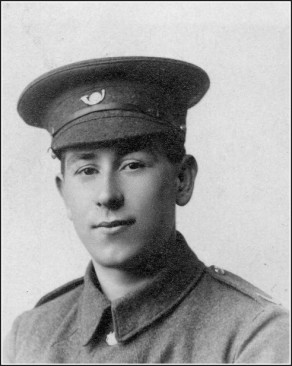





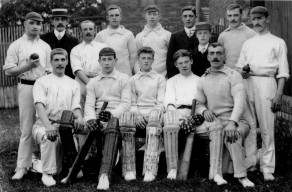

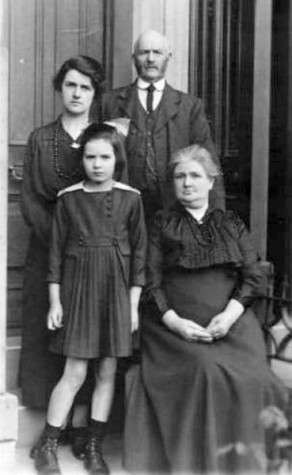
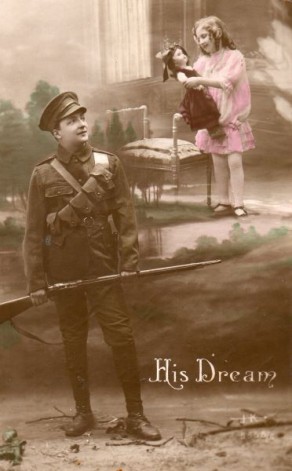
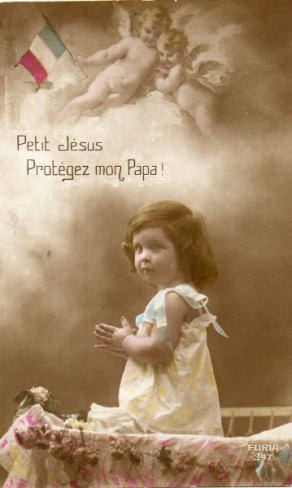
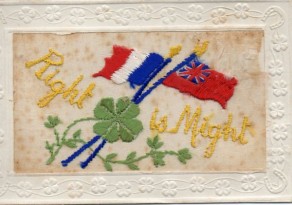
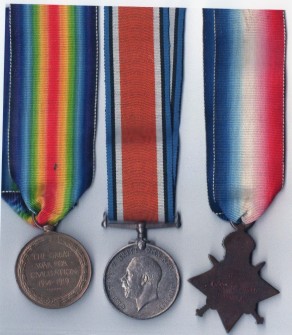



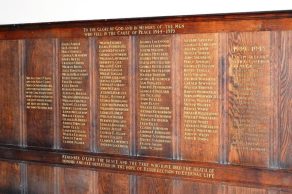






No comments yet.